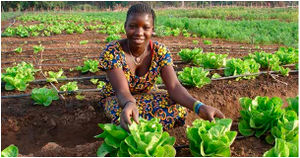Difference between revisions of "SPIS Toolbox - Loan assessment: Adjust Repayment Plan to Cash Flow"
From energypedia
***** (***** | *****) m |
***** (***** | *****) m |
||
| Line 6: | Line 6: | ||
| {{Back to Finance}} | | {{Back to Finance}} | ||
| | | | ||
| − | | | + | | {{Next Chapter}}[[SPIS_Toolbox_-_Bank_Loan|►Go to the Next Chapter]]</span></span> |
|} | |} | ||
| Line 78: | Line 78: | ||
| {{Back to Finance}} | | {{Back to Finance}} | ||
| | | | ||
| − | | | + | | {{Next Chapter}}[[SPIS_Toolbox_-_Bank_Loan|►Go to the Next Chapter]]</span></span> |
|}{{SPIS Reference}} | |}{{SPIS Reference}} | ||
Latest revision as of 19:31, 21 July 2020

| ►Back to the Start Page | ►Back to the Module Page | ►Go to the Next Chapter |
7. Loan assessment: Adjust Repayment Plan to Cash Flow
SPIS, being based on agricultural activities, follows specific liquidity patterns, such as:
- irregularity, seasonality;
- farming-household mix;
- several cash generating activities (agricultural, non-agricultural);
- external shocks (climate, weather, pest, disease, prices).
Determining specific loan features (disbursement pattern, repayment rate, collateral, repayment frequency) should be based on cash flow projections of a particular case.
This requires:
- in depth understanding of the farm and family economics;
- strong interaction with the potential borrower;
- networking with other sources of information in the sector and region;
- thorough understanding of the market and market trends;
- trained staff with innovative attitudes.
SPIS requires high initial investment. These may result in:
- long repayment periods (5-10 years);
- a need for high profitability of the SPIS;
- a need for a grace period at the beginning of the repayment plan.
Note: High installments resulting from very short loan repayment periods can create a threatening liquidity shortage – especially in the first year.
Outcome/Product
- Cash flow statement (current, projected);
- Tailor-made disbursement and repayment plan;
- Financial risk analysis/adjustment;
- Summarized risk analysis;
- Tailor-made loan details for decision.
Data Requirements
Collect, compute, prepare:
- total farm liquidity analysis (both current and that projected with SPIS);
- borrower’s own capital contribution;
- repayment potential;
- repayment plan;
- loan details;
- subsidy/re-finance details.
People/Stakeholders
- Loan officers financing or planning to finance SPIS;
- Producer(s) / potential borrower;
- Management of financial service providers (operational level);
- Public entities promoting and/or subsidizing SPIS;
- Sponsors.
Important Issues
- Specific liquidity patterns need to be identified for every single case.
- Data collection process is challenging due to intermingled family-farm economy.
- High initial investment should ideally not lead to prohibitive transaction costs (consider bank loans or external subsidies);
- High initial investment should ideally not lead to liquidity shortages of the client due to high or very early installments (be flexible when defining installment plans).
| ►Back to the Start Page | ►Back to the Module Page | ►Go to the Next Chapter |




















